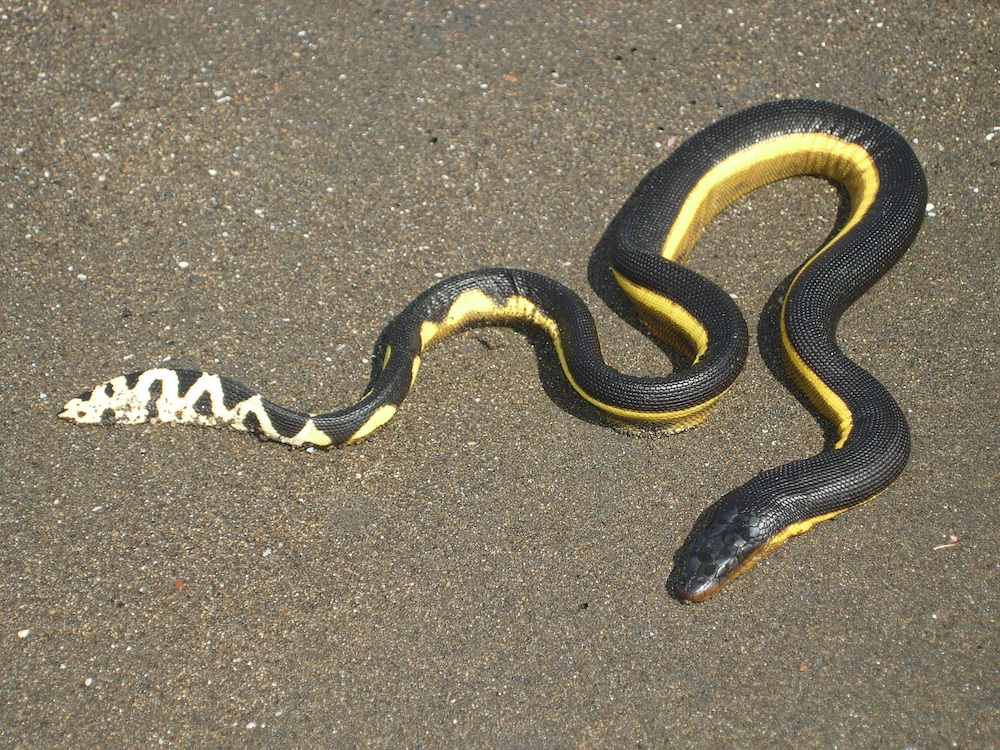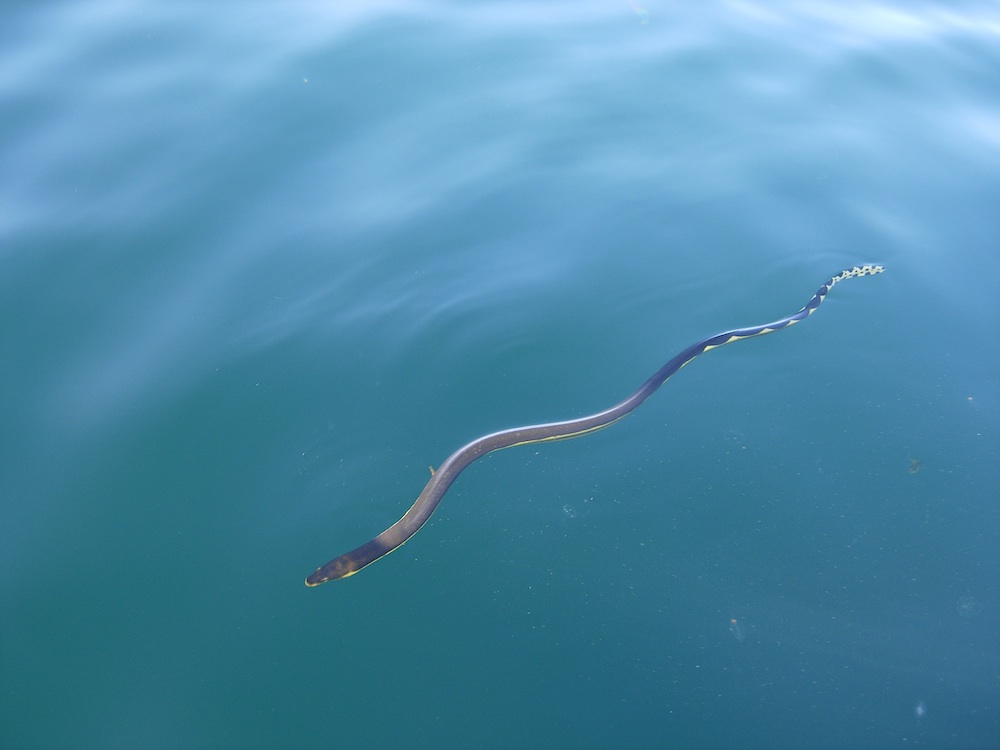
Like camels of the sea, a species of sea snake goes without a drink for months on end, gradually dehydrating, before refueling with freshwater when rain falls, new research suggests.
"Perhaps six or seven months of the year, these snakes are living thirsty," said Coleman Sheehy III, an evolutionary biologist at the University of Florida, and a co-author of the study published today (March 18) in the journal Proceedings of the Royal Society B.
Marine snake
Past studies have found that snakes can dehydrate for short periods of time and then gulp freshwater when it's available, but those snakes typically have access to freshwater sources such as nearby springs. [Image Gallery: Snakes of the World]
The yellow-bellied sea snake, Hydrophis platurus, by contrast, has a vast range and habitat. The 3.3-foot-long (1 meter) snakes drift along ocean currents feeding on fish, and are found in the middle of the vast Indian and Pacific oceans, spending months without any freshwater sources.
To understand exactly how they manage this feat, Sheehy and his colleagues gingerly collected hundreds of the wild sea snakes in the Guanacaste province of Costa Rica. (The sea snakes have a nasty, venomous bite, though no one has died from one, Sheehy said.) In that region, the dry season lasts from December to May or June, and the snakes were collected on several different trips at different points in both seasons.

They then took the snakes back to their lab, towel-dried them, and measured and weighed them.
Sign up for the Live Science daily newsletter now
Get the world’s most fascinating discoveries delivered straight to your inbox.
Next, they placed the snakes in freshwater tanks to see whether the sea creatures drank.
Snakes collected after long dry spells were extremely skinny, because they had been slowly drying out. The slimmest snakes also drank freshwater in the lab aquariums, plumping up and rehydrating.
But many snakes collected during the rainy season and shortly afterward didn't sip a drop of water, suggesting they can go quite a while, even one to two months, before they get the urge to rehydrate.
"They tank up during the rainy season and then it takes a while for them to get thirsty enough to drink," Sheehy told Live Science.
The team suspects that H. platurus has evolved adaptations to prevent freshwater loss through the skin.
But at some point, the sea snakes need to drink, so where do they get their water?
"The only source of freshwater for a marine snake like this species that's living in the middle of the ocean is rainfall," Sheehy said.
During rainy periods, the rainfall floats at the top of the denser saltwater ocean and accumulates in layers known as freshwater lenses. It's these freshwater lenses that provide a drink for the parched yellow-bellied sea snake.
The snakes are hardwired to come up to the surface to drink, even when they are in a freshwater aquarium where a good drinking source is all around them, Sheehy said.
The new study shows that animals that evolved on land but then moved into the seas have developed a unique array of adaptations to their salty home. For instance, whales seals, sea turtles and other animals have evolved not to need any freshwater access at all — either by having salt glands that process seawater, or by extracting water from their food, Sheehy said.
"Instead of adapting to marine environments like many other vertebrates have, these animals, sea snakes, have taken a different approach," Sheehy said.
Follow Tia Ghose on Twitter and Google+. Follow Live Science @livescience, Facebook & Google+. Original article on Live Science.

Tia is the managing editor and was previously a senior writer for Live Science. Her work has appeared in Scientific American, Wired.com and other outlets. She holds a master's degree in bioengineering from the University of Washington, a graduate certificate in science writing from UC Santa Cruz and a bachelor's degree in mechanical engineering from the University of Texas at Austin. Tia was part of a team at the Milwaukee Journal Sentinel that published the Empty Cradles series on preterm births, which won multiple awards, including the 2012 Casey Medal for Meritorious Journalism.









